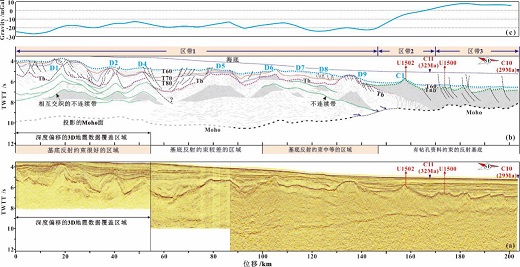

The interaction between magmatic and extensional processes related to the formation of rifted margins has been and still is highly debated. The interpretation of magmatic additions, timing of onset and budget of magma during rifting remains controversial and poorly constrained. In this study we explore the emplacement of magmatic additions in a rift system with high sedimentation rates and a well-established stratigraphic framework and discuss the perspectives toward resolving some of these problems.
In this paper, we present new high-resolution seismic profiles imaging the distal margin and transition to oceanic crust in the northern South China Sea (SCS). Based on the observation of magma-related structures and the interrelationship with the sedimentary sequence, as well as the drilling results of IODP Expeditions 367&368, we define characteristics and timing of magmatic additions. The result shows that magmatic activity is expressed mainly by laccoliths and sills in the sediment-rich distal margin. Their emplacement initiated during the rifting stage, propagated seaward and continued until the early post-rift. Breakup was triggered by the formation of ENE striking cone-shaped volcanoes.
In this study we show that the amount of magmatic additions progressively increases during rifting and lasted until 23.8 Ma, i.e. after the cessation of rifting. First order estimates of the amount of magmatic additions provide a first step toward understanding the magmatic budget of the northern SCS during rifting, which, despite its importance, is still lacking from most present-day rifted margins.
